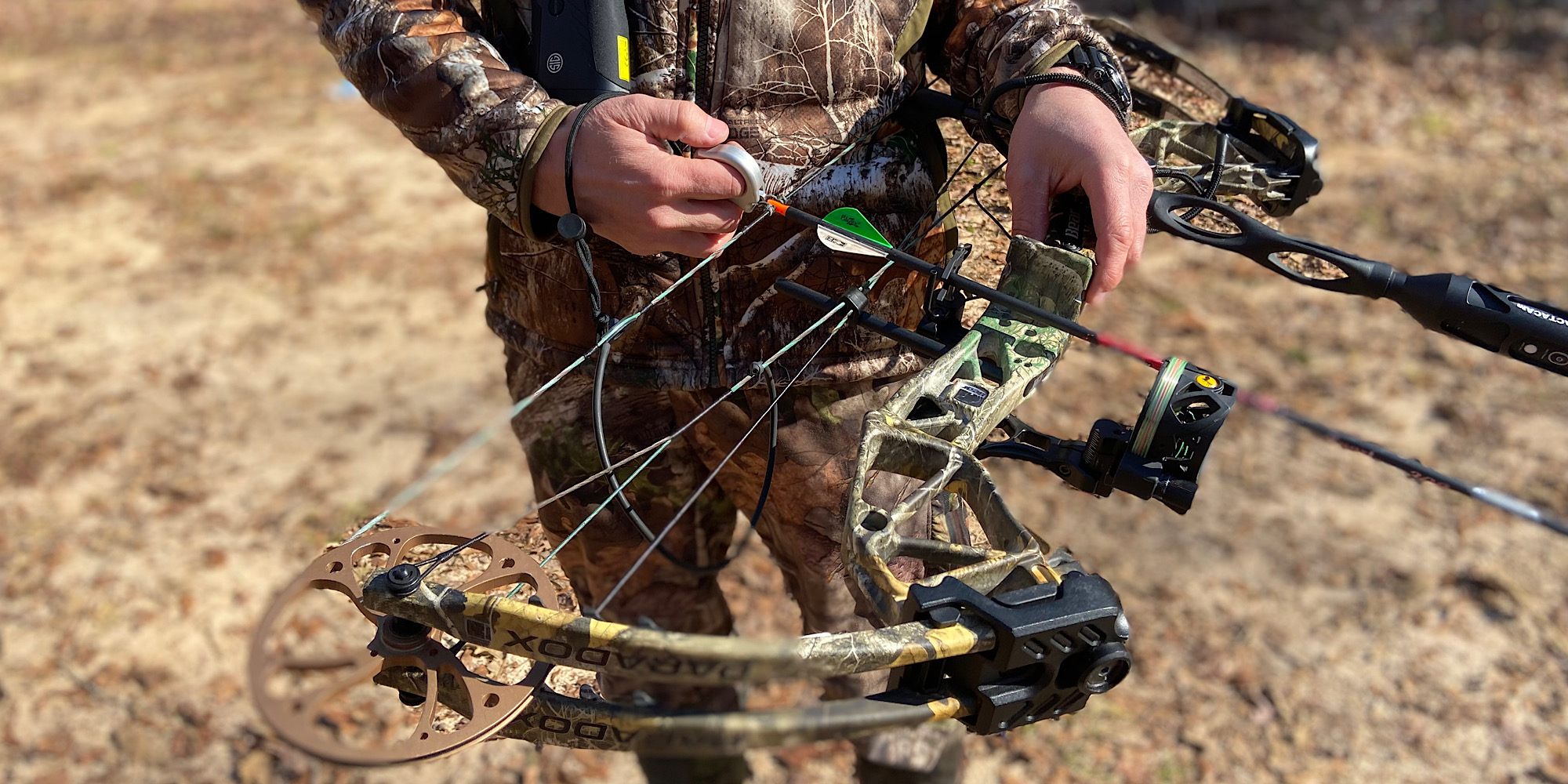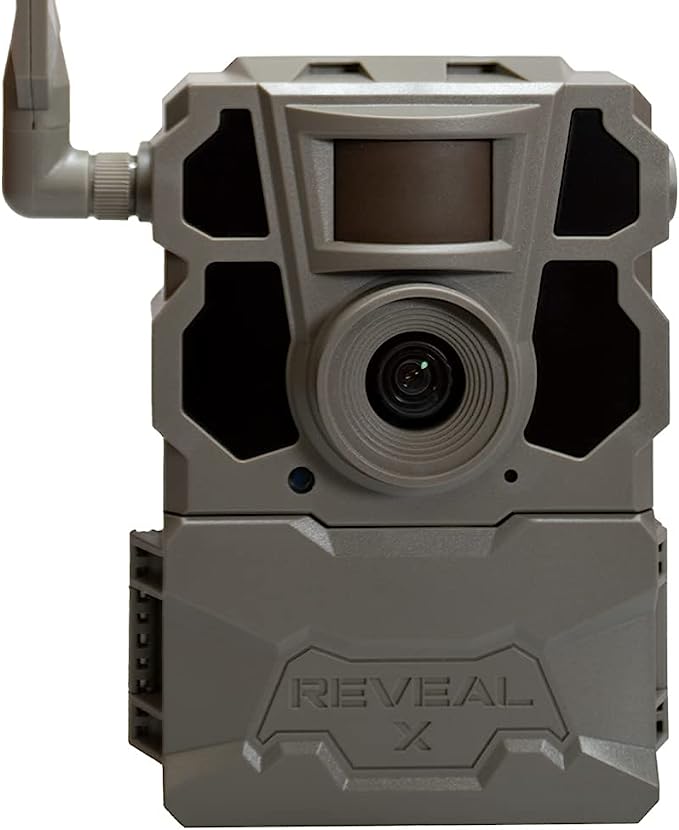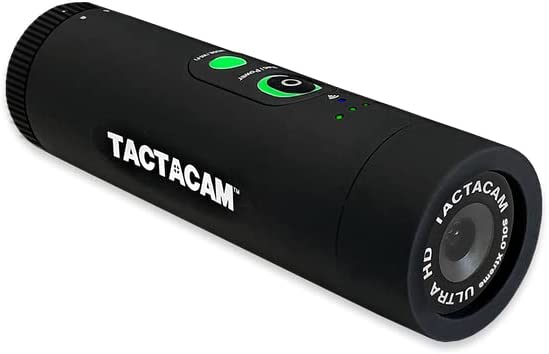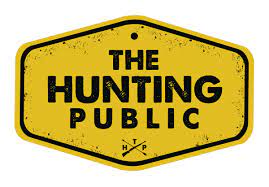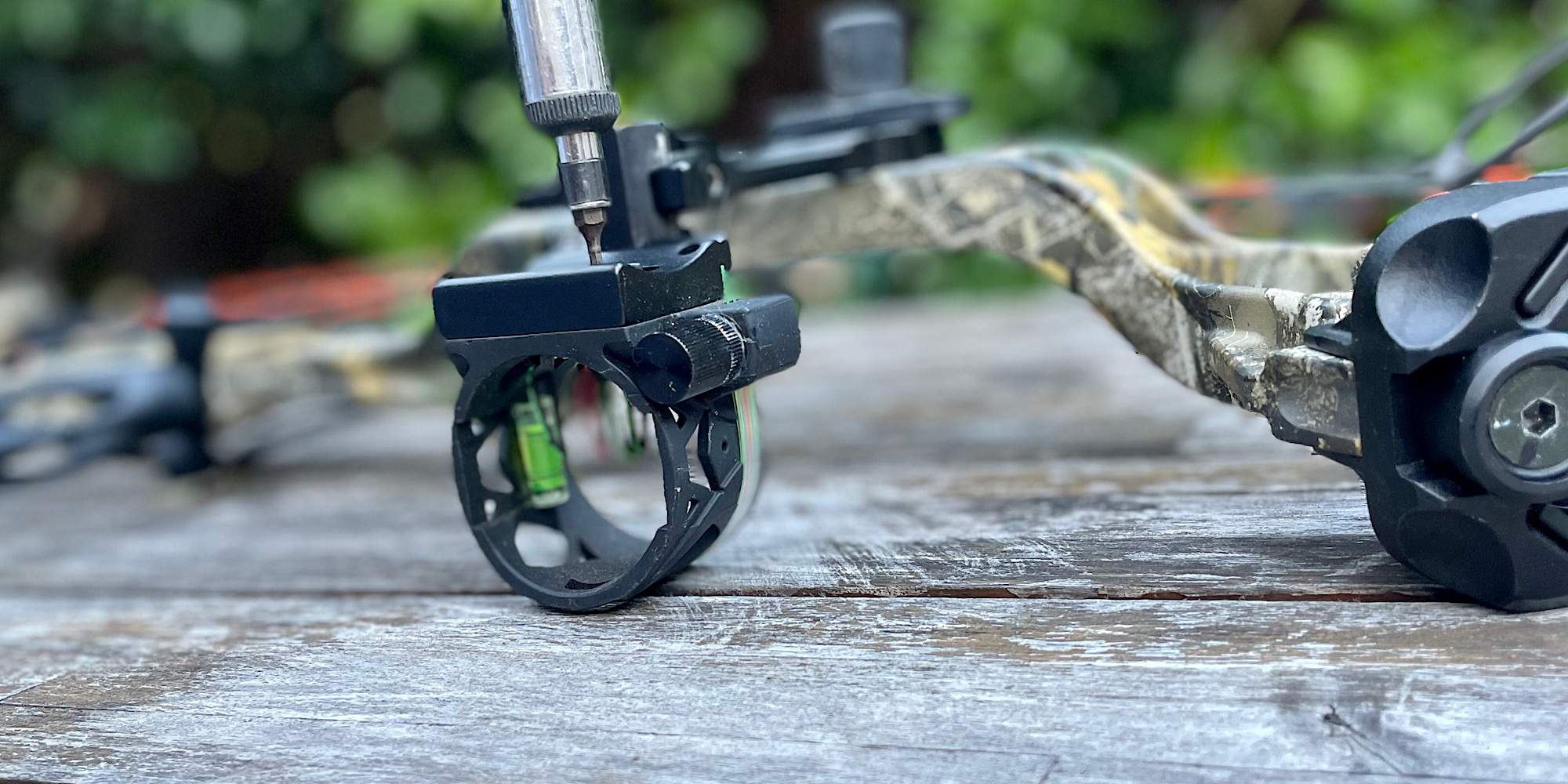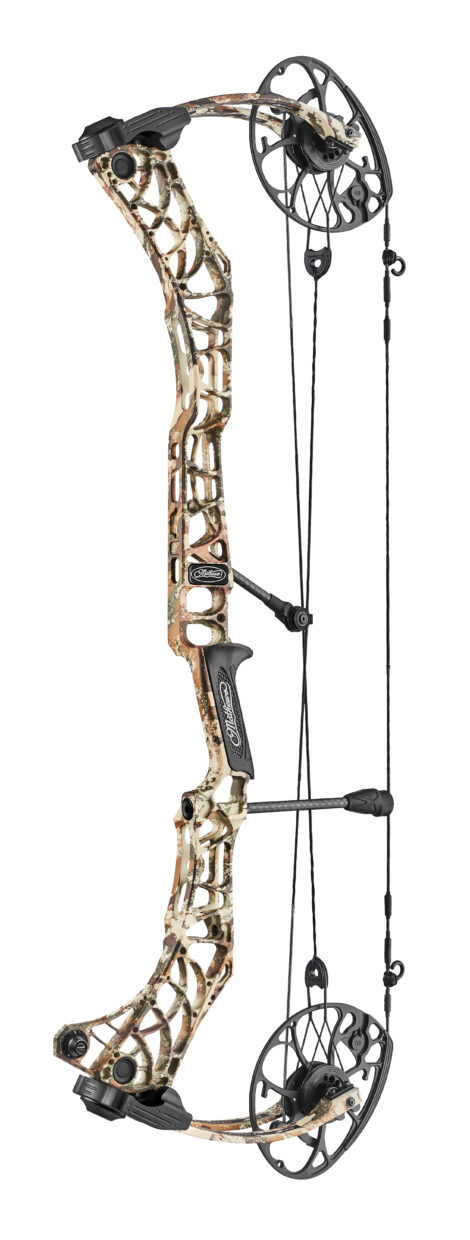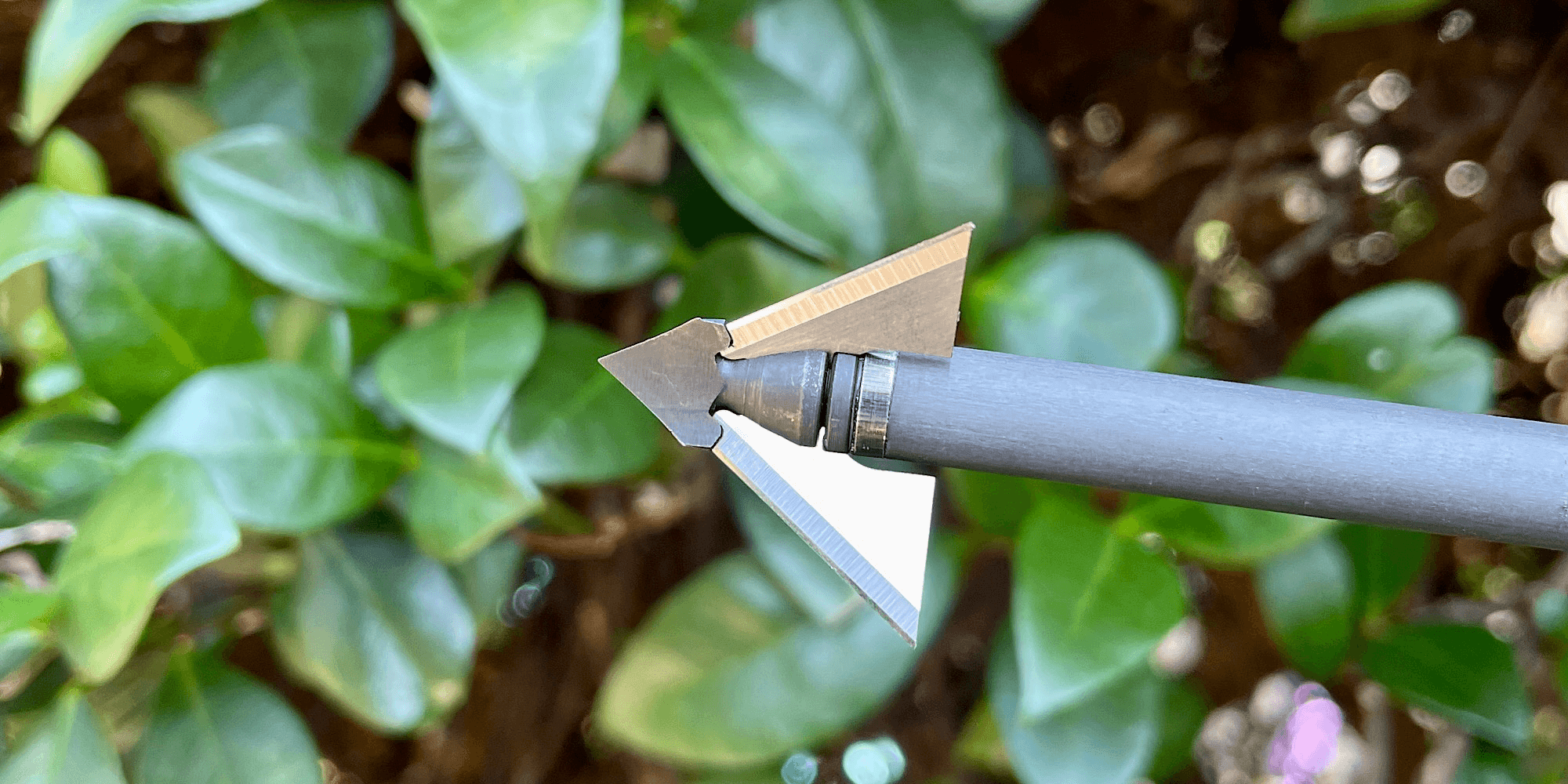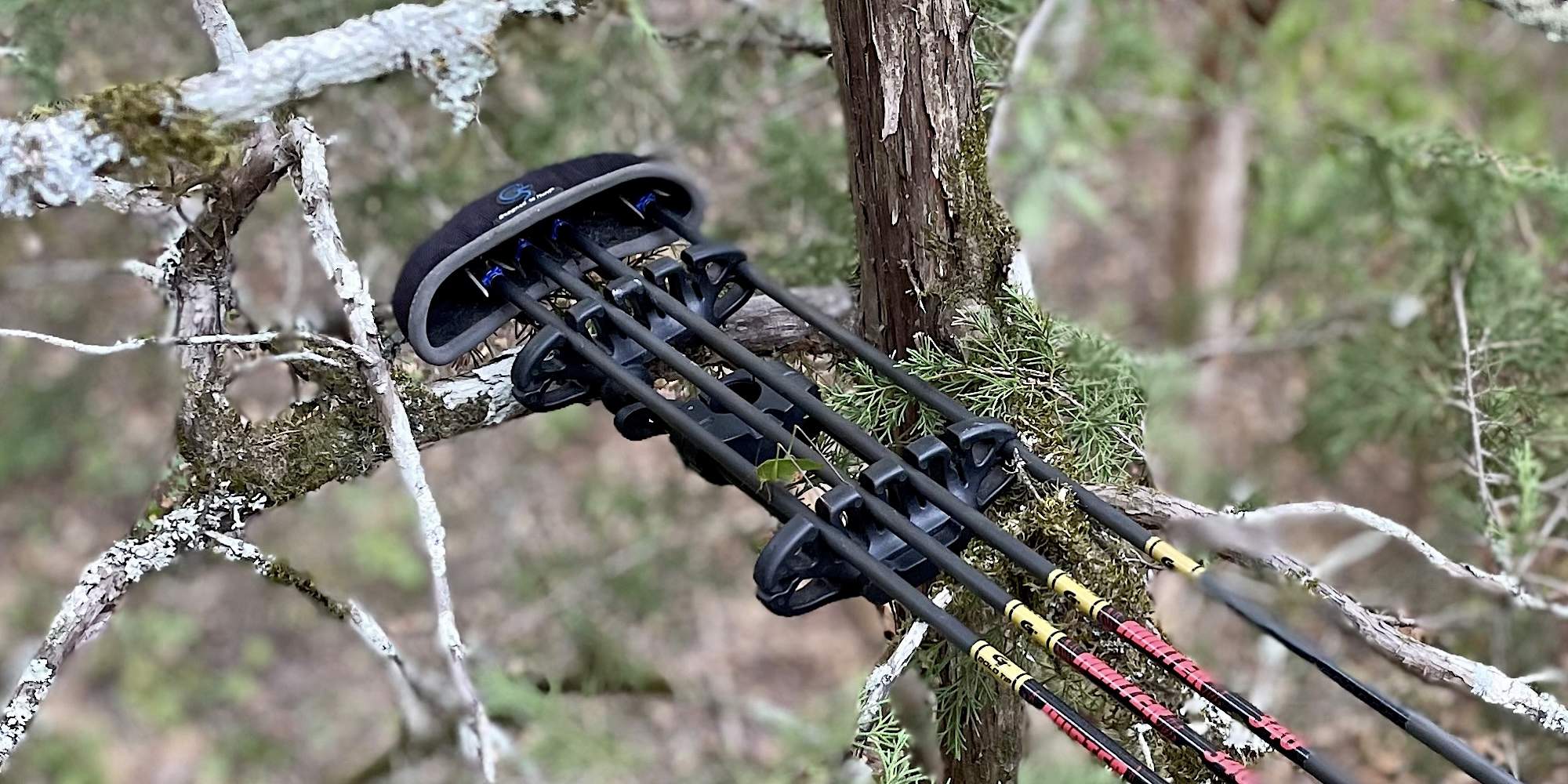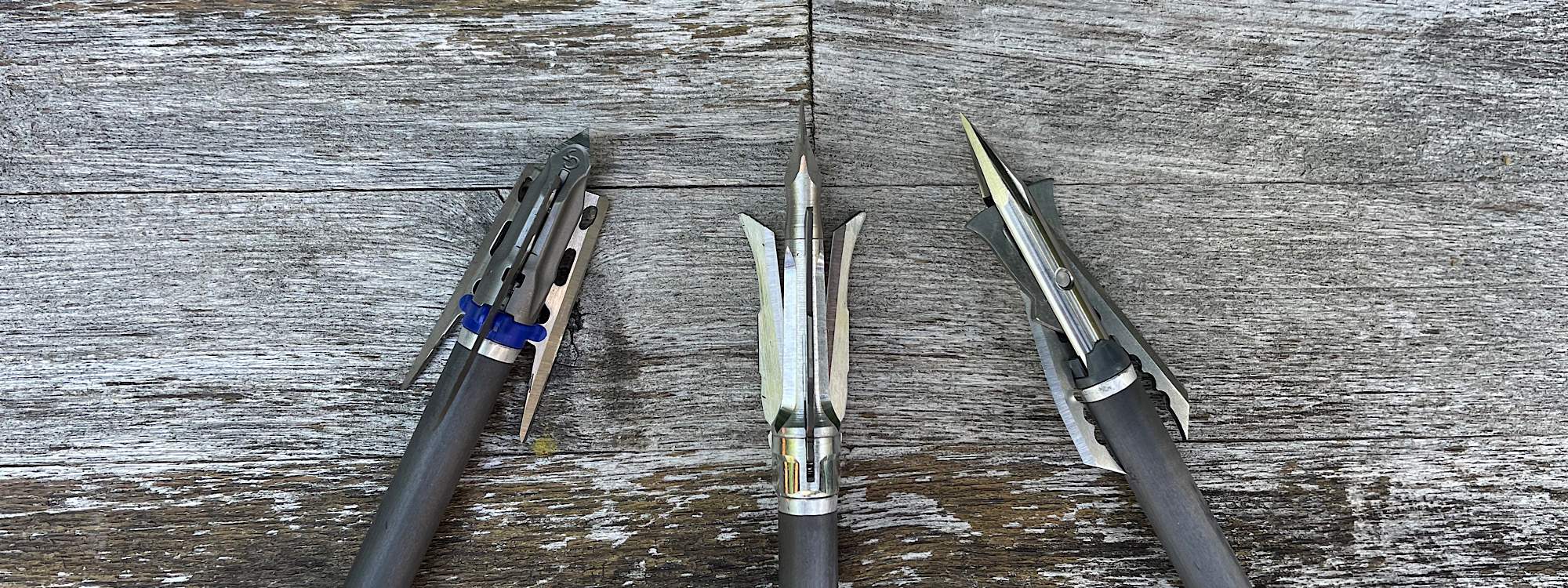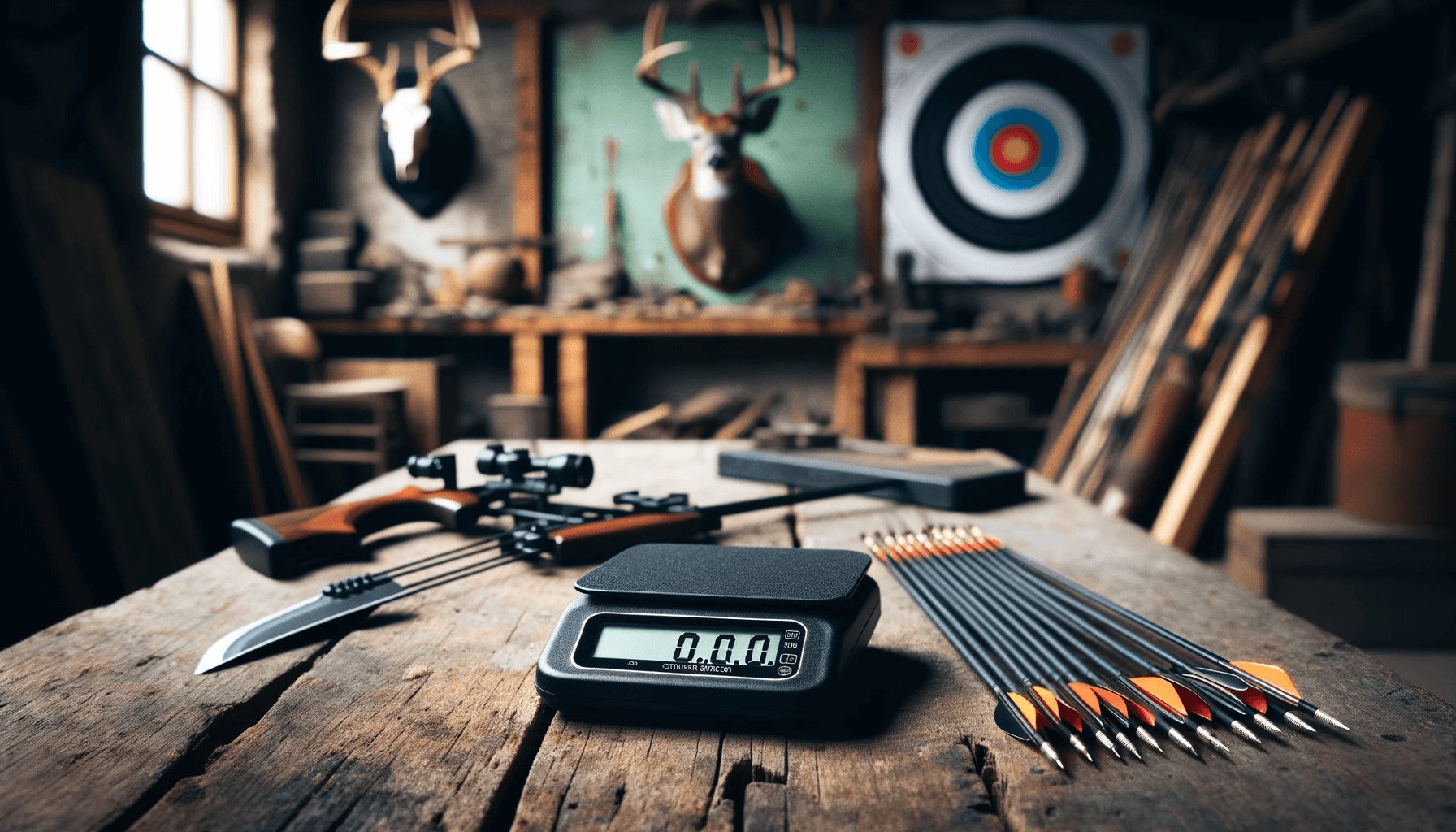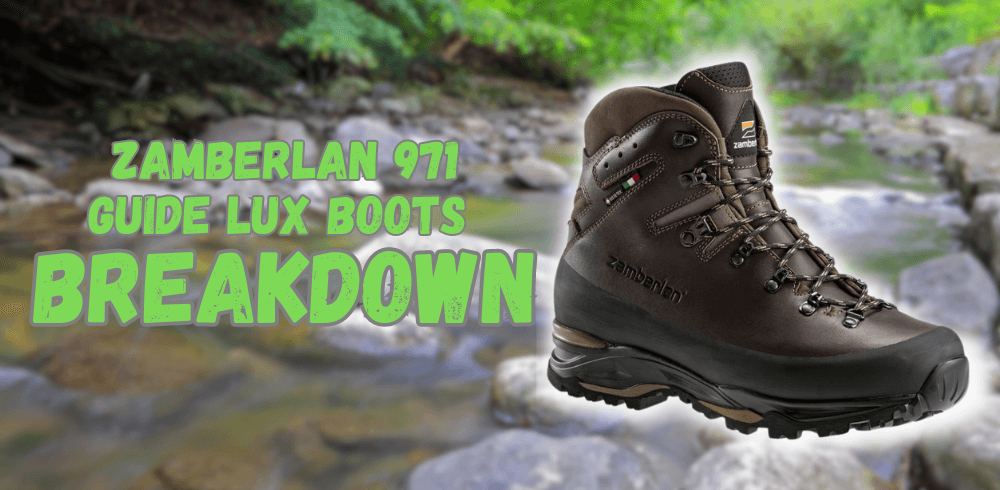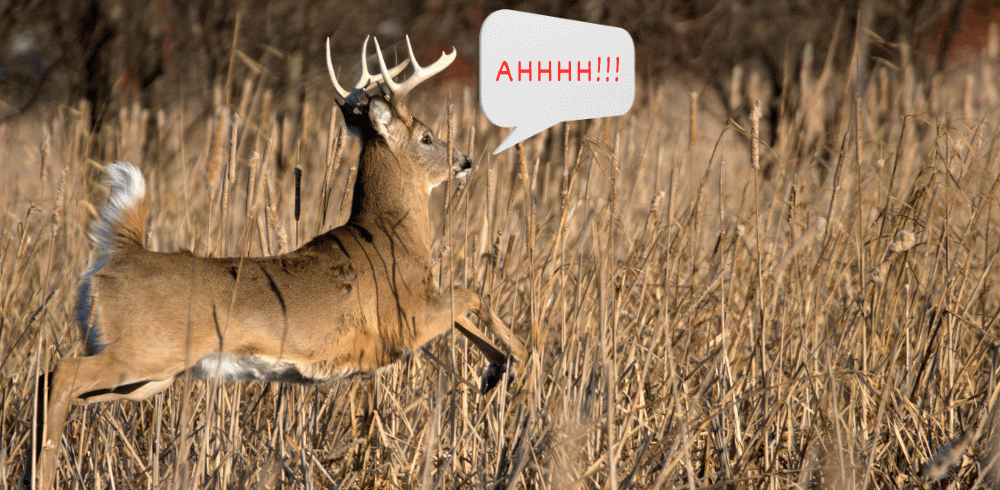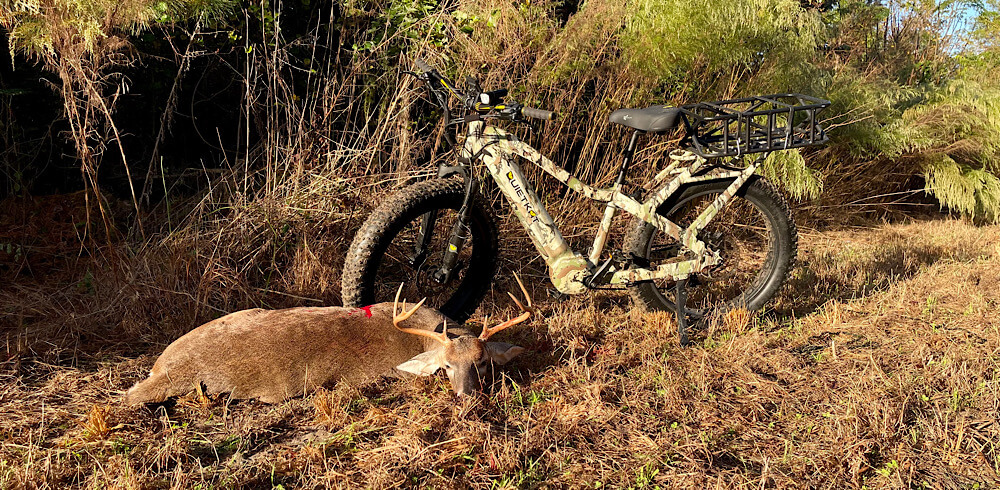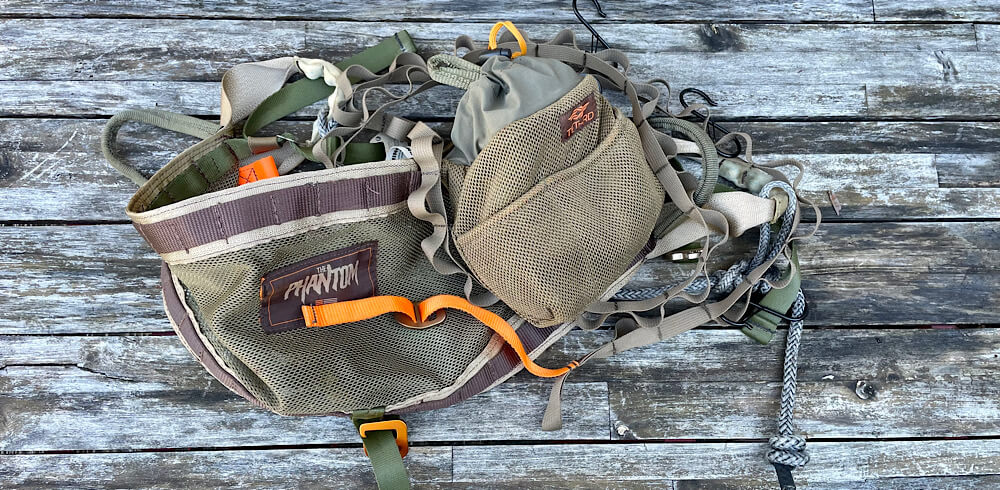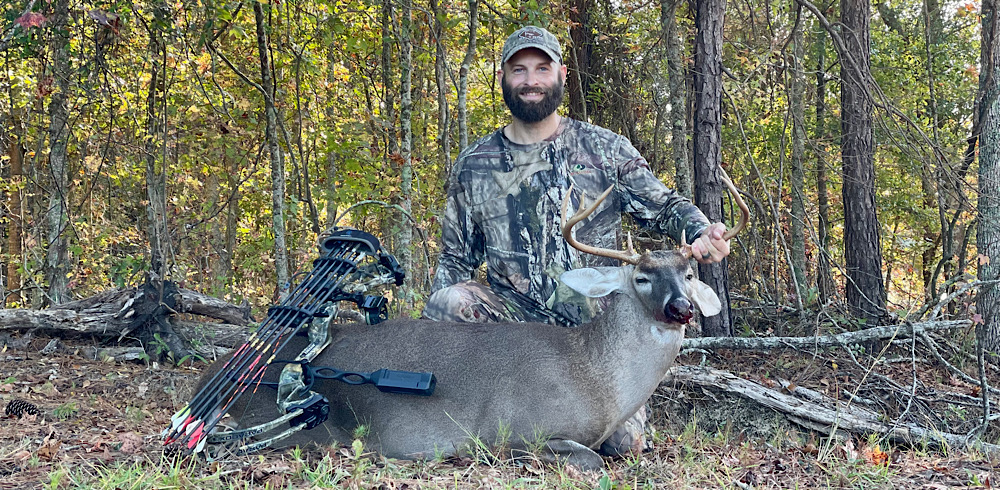You’re looking for the best compound bow, but who’s to say which is best? Well, each manufacturer sure has a pretty strong opinion on the subject, but it can be pretty hard to take their word for it.
So, I’ve gathered the best of the best here. Below, you’ll see the top of the line bow that each of the best manufacturers has to offer. Each one sets itself apart from the rest with unique features specific to that bow.
Best Compound Bow By Manufacturer
1. Bear/The Hunting Public Adapt RTH (Ready-to-Hunt)
- Designed with The Hunting Public
- Axle-to-Axle: 32″
- Brace Height: 6.5″
- IBO Speed: 320 fps
- Draw Length: 24″-31″
- Draw Weight: 45-60 lbs., 55-70 lbs.
- Dexterity: Right Hand / Left Hand
- Finish: True Timber Strata, Tan/Camo, Olive, Throwback Tan, Veil Whitetail
Now, I know that Bear is typically not thought of as being a high-end bow manufacturer, but when you think of what bowhunting is all about, much of what comes to mind was inspired by Fred Bear through Bear Archery.
With that being said, the bow I’ve listed here isn’t their most expensive bow, but I’d say it envelopes the ideals of Bear Archery. In my opinion, it’s the working man’s bow, which I believe is what Bear Archery has strived to produce for decades.
The Bear Adapt RTH (Ready-to-Hunt) is a great mid-tier bow that was designed with the help of The Hunting Public, and comes complete with all accessories needed, including a stabilizer, peep sight, sight, whisker biscuit, and quiver.
It’s a single-cam bow, which means it’s going to be slightly quieter than its dual-cam counterpart. That’s a huge feature when the wind is calm and you’re drawing back on a mature buck.
Having only one cam also means less maintenance and less stringent tuning, as there aren’t any synchronization issues to deal with.
After taking a bear, two bucks, two does, two turkeys, and a squirrel with the Paradox RTH, which is the Adapt’s sister bow with almost identical characteristics, I’d say Bear’s mid-tier line shoots as well as any other mid-tier bow out there.
This bow is available for right-handed or left-handed shooters, with a 45-60 lb. draw weight or a 55-70 lb. draw weight.
The high quality that accompanies every Bear bow, along with the included features, makes this the best compound bow in the mid-tier category.
2. Hoyt Ventum Pro 30
- Many different color patterns available
- Available in two different sizes
Ventum Pro 30
- Axle-to-Axle: 30″
- Speed: 342 FPS
- Brace Height: 6″
- Weight: 4.45 lbs.
- Draw Length: 25″-30″
- Draw Weight: 40-80 lbs.
Ventum Pro 33
- Axle-to-Axle: 33″
- Speed: 334 FPS
- Brace Height: 6-3/8″
- Weight: 4.67 lbs.
- Draw Length: 26″-31″
- Draw Weight: 40-80 lbs.
The Hoyt Ventum Pro is easily the best compound bow offered by one of the best manufacturers on the planet.
The A-listers shooting a Ventum – from bowhunters to world-class tournament archers – spread far and wide.
The Bone Collector crew has not only laid deer down with a Ventum, but Hoyt even offers it in a couple Bone Collector patterns.
Not a Bone Collector fan? What about Cameron Hanes. There’s a Keep Hammering pattern also. Now, before diving into the specs, what’s so great about this bow?
Well, the HBX Pro cams that come on the Ventum Pro are the smoothest and quietest cams Hoyt makes.
There are two Shock Pod locations, which absorb more riser vibration post-release. The In-Line picatinny sight rail and Integrate rest mount streamline the profile of the bow.
They’ve also gotten very particular about their quiver mount location, which may not seem like a huge deal, but that just goes to show the level of detail they went to with this bow.
One of my favorite features is the VitalPoint grip, which basically just puts the bow at a different angle in your hand. It causes you to have negative input on the bow, increasing accuracy, which is what we all want.
Last, but not least, their compact Short Stop stabilizer is located up front with a much lower center of gravity.
The Ventum Pro is available in a 30 and a 33, which are the axle-to-axle measurements – 30″ and 33″.
I’ve already listed all the specs for each in the table above, but to highlight, the 30″ is going to be more compact, making it perfect for those who prefer a smaller bow in the tree or on the ground.
It’s also going to shoot slightly faster at 342 fps., with a brace height of 6″, versus the 33’s brace height of 6-3/8″ at 334 fps. Both are right around 4.5 lbs.+/-, and the draw weight ranges are identical at 40-80 lbs.
The draw length is what is going to absolutely exclude one for some people. If your draw length is over 30″, the Ventum Pro 33 is your only option with a range of 26″-31″.
So there you have it. Two options for the best compound bow that Hoyt Archery offers.
See the best bow sights on the market here!
3. Mathews V3X
- 33″ Axle-to-Axle
- Many different color patterns available
- Available in two sizes
V3X 29
- Axle-to-Axle: 29″
- Speed: Up to 340 FPS
- Brace Height: 6″
- Weight: 4.47 lbs.
- Let-off: 80% or 85%
- Draw Weight: 60, 65, 70, 75 lbs.
- Draw Length: 25.5″-30″
V3X 33
- Axle-to-Axle: 33″
- Speed: Up to 336 FPS
- Brace Height: 6.5”
- Weight: 4.67 lbs*
- Let-off: 80 or 85%
- Draw Weight: 60, 65, 70, 75 lbs.
- Draw Length: 27″–31.5”
All the Mathews purists out there will understand why the V3X is listed here as the best compound bow offered by Mathews.
It’s been loved by the thousands who have used it since its inception. Balance is the main word of choice for the V3X.
It was designed to feel perfect in hand. From their Bridge-Lock Sight technology to the tightest-mounted quiver to date, the Mathews team has designed every part of this bow to feel like an extension of the shooter’s body.
Mathews can say it a whole lot better than I can, so watch the video below to get the full picture of what went into the making of this epic innovation in bowhunting equipment.
4. PSE Carbon Levitate – Nock On
- Designed with John Dudley of Nock On Archery
- Designed to be the world’s best, most high-end bow
- Many different color patterns available
- Two models to choose from (different cams)
E2 Model
- Weight: 3.6 pounds
- Draw Length: 27.5″-31.5″
- Draw Weight: 60, 70, 80 pounds
- Speed: 348 FPS
- Axle-to-Axle: 32.25″
- Brace Height: 6″
S2 Model
- Weight: 3.6 pounds
- Draw Length: 25″-29″
- Draw Weight: 60, 70, 80 pounds
- Speed: 341 FPS
- Axle-to-Axle: 32.25″
- Brace Height: 5.75″
At just 3.6 lbs., the PSE/Nock On Carbon Levitate is one of the lightest bows you’ll find anywhere. It’s also one of the absolute best compound bows on the planet.
It was designed that way by PSE, with the help of John Dudley of Nock On Archery. For John Dudley to put his mark of approval on this bow, you know it’s top of the line.
They set out to make the world’s most high-end bow, and I think they succeeded. Every riser is hand laid by someone in the USA.
PSE’s proprietary Dead Frequency Carbon layup makes the Levitate dead in your hand and ultra-quiet on the shot.
The E2 Cam System features a bearing design that provides ultimate stability and increased accuracy, reduced friction for a smoother feel, and faster speeds at all draw lengths.
The new E2/S2 cams were specifically designed for maximum energy transfer from the limbs to the arrow. Both are offered with HL (90%-80%) and LL (75%-65%) let-off mods.
Every part of this bow has been meticulously built and fully tuned to super strict standards.
See the best fixed blade broadheads here!
5. Elite Archery Omnia
- 32″ Axle-to-Axle
- 347 FPS (IBO)
- 6″ Brace Height
- Weight: 4.5 pounds
- Draw Length: 24.5″-30″
- Draw Weight: 40, 50, 60, 65, & 70 pounds
- Up to 90% let-off
- Available for right- and left-handed shooters
The Elite Archery Omnia was built to be the “world’s most shootable bow.” With Elite’s SP Cam, along with the V2 Micro Mods, shooters can build the exact holding weight, draw length, and back wall that they want.
Draw length can be changed in 1/4″ increments, offering customization not found in other bows. To help with tuning issues, Elite’s S.E.T. Technology allows for micro-adjustability of limb pivot, which changes cam lean, as well as center shot.
Their Versa Mods allow shooters to set their holding weight, down to a single percentile between 70 and 90%.
Omnia’s Delta VRT, along with Elite’s VibeX & Vibration Reduction Technology, dampens residual vibration, quieting the shot and deadening the bow in hand.
The adjustability of this bow to the shooter is what makes this bow the best compound bow offered by Elite Archery, and it’s definitely worth checking out.
Need a quiver? See the best options here!
Which is the best compound bow on the market?
In most cases with archery equipment, there’s a ton of subjectivity. The question of the best compound bow is no different.
These days, modern bows are made so well that asking which is the best compound bow is about like asking which color in a rainbow is best.
You’ll get a different answer with each person you ask. However, there are some key differences with each bow that may sway your decision from one to another.
If weight is a major factor for you, the Carbon Levitate by PSE and Nock On may be the best compound bow to you.
If absolute balance in the hand is most important, the Mathews V3X may be the best to you. If all-around shootability is most important, the Elite Omnia may be the best.
So, of the bows listed above, choose your best based on the specs and features listed. And enjoy!
How to measure draw length
When choosing a bow, it’s imperative that you know your draw length. Or at least have a professional figure it out for you.
There’s a pretty simple formula for figuring it out. Keep in mind, though, that if you’re new to archery, you may find yourself wanting to change your draw length by a half inch in one direction or the other based on feel once you start shooting.
The process is simple: stand up straight against a wall and spread your arms out wide. Then, have someone measure from the tip of one middle finger to the tip of the other.
Take that number and divide it by 2.5. You’ve got your draw length! Now, like I said before. You may want to add or subtract a half inch or so if you feel it’s a little long or short when you start shooting – especially if you change styles of release (i.e. index style to thumb button).
You can always experiment with your draw length, within the range that the bow permits, using a compound bow press.
How to choose draw weight
Choosing the proper draw weight is a little more ambiguous than draw length, but before diving into it, let’s look at the two things that usually determine draw weight.
The first is the game being pursued. Most bowhunters are going to think of the animals they’re chasing when choosing their draw weight.
For elk, the draw weight goes up. For turkeys, it comes back down. But it needs to be stated that any North American game animal can be ethically taken down with a well-placed arrow from a 60 lb. bow.
Notice I emphasized well-placed. You gain a little more room for error with a higher-poundage bow, but not enough to make marginal shots.
Now, if you can easily draw 70 or 80 pounds, and you primarily hunt elk or moose, then by all means, stick with a high-poundage bow.
If, however, you primarily hunt whitetails and turkeys, you can get the same results with a lower-poundage bow. Even down to 50 lbs.
So, that brings us to the second part of the equation – the hunter. For a new bowhunter, the archery muscles that aren’t normally used need strengthening before higher draw weights can be used effectively.
That’s not to say, however, that if you’ve never shot, you need to purchase a 45-60 lb. version of a bow that also has a 55-70 lb. version. You need to take your size and relative physical fitness into account.
If you’re a smaller person who doesn’t put much effort into physical fitness, a bow with a lower max draw weight may be right for you.
Only you know what you’re capable of, though. If you know that you’re going to shoot a lot, and 50 lbs. is going to be a cake walk after a couple months, I’d purchase a bow with more draw weight.
What you don’t want to do is shoot a draw weight that forces you to raise the bow way up in the air to get it back.
You want to be able to hold the bow straight out in front of you, draw back using good form, and hold the bow steady on target without being shaky.
When you’re new to it and your archery muscles aren’t in shape, you’re going to get shaky. But you don’t want to start out that way. If you do, drop the draw weight back a bit.
The more you shoot, the higher draw weight you’ll be able to shoot effectively. And remember, the best compound bow won’t compensate for poor form or shooting a higher draw weight than you’re ready for.
What is let-off?
Let-off has to do with the percentage of draw weight that you’re holding when you get to full draw. Instead of it being the percentage you’re holding, however, it’s the percentage that lets off.
If you’re shooting a bow with 80% let-off, then you’re only holding 20% of the total draw weight at full draw.
For example, if you’re shooting a bow set to 65 lbs., and that bow has an 80% let-off, then you take the remaining 20% of the 65 lbs., and that’s what you’re holding at full draw.
65 lbs. x .20 = 13 lbs. being held at full draw.
The higher the let-off, the less you’re holding at full draw. Some bowhunters like holding a little more weight. Others like less. It’s personal preference really.
What’s nice is that some bow manufacturers offer different modules for their cams that allow you to change the let-off.
See the best mechanical broadheads here!
Single cam vs. dual cam
Single cam bows have a single cam – typically on the bottom limb – with a wheel on the top limb, while dual cam bows have two cams – one on the top limb and one on the bottom limb.
The differences between the two styles can be vast, but each has their own set of pros and cons. For single cam bows, there is less maintenance and less tuning because there’s only one cam and you don’t have to worry about syncing it with a second.
The downside is they are slower due to a dual cam bow having an extra cam to exert force on the arrow during release. Each style of bow can be very accurate, but a dual cam bow requires more fine-tuning for maximum accuracy.
If timing is even slightly off between the two cams, accuracy will be greatly reduced. Single cam bows are typically quieter due to having less parts to vibrate during release.
And single cam bows are typically less expensive due to the engineering and parts involved with building a dual cam bow. In either case, there are excellent single cam bows and excellent dual cam bows.
Which one you purchase depends on your desired setup, and the size of your wallet. Typically, however, the best compound bow by each manufacturer, at any given time, is going to be a dual cam bow.
Questions and Comments
I hope this has been helpful, and I’d love to hear what bow you’re shooting, or what bow you’re thinking of getting. Leave your questions or comments below.
You can also find us on Instagram and Facebook @southeasternbowhunting.
Don’t Forget The Case
If you’re thinking of getting a new bow, make sure to get the right case to protect it. There are a lot of great bow case options designed for keeping your pricey investment safe and secure no matter if you’re backpacking deep in the timber or flying cross-country for a 3D shoot.

